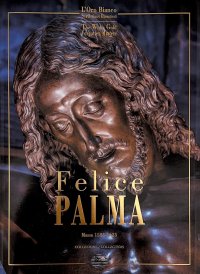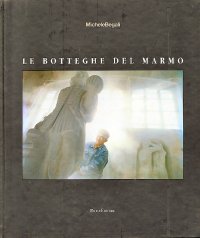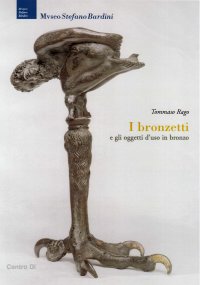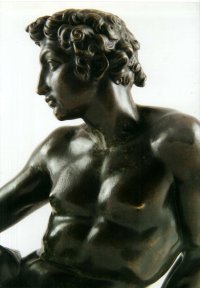Felice Palma. Massa 1583-1625. Collezione / Collection.
Texts by Andrei Cristina, Ciarlo Nicola, Federici Fabrizio, Claudio Casini and Sara Ragni.
Italian and English Text.
Pontedera, 2024; bound in a case, pp. 289, b/w and col. ill., b/w and col. plates, cm 24,5x34.
(L'Oro Bianco. Straordinari Dimenticati. The White Gold Forgotten Masters).
cover price: € 160.00
|
Books included in the offer:
Felice Palma. Massa 1583-1625. Collezione / Collection.
Texts by Andrei Cristina, Ciarlo Nicola, Federici Fabrizio, Claudio Casini and Sara Ragni.
Italian and English Text.
Pontedera, 2024; bound in a case, pp. 289, b/w and col. ill., b/w and col. plates, cm 24,5x34.
(L'Oro Bianco. Straordinari Dimenticati. The White Gold Forgotten Masters).
FREE (cover price: € 160.00)
Le botteghe del marmo
Italian and English Text.
Ospedaletto, 1992; bound, pp. 153, 10 b/w ill., 60 col. ill., cm 24x29.
(Immagine).
FREE (cover price: € 34.49)
Museo Stefano Bardini. I Bronzetti e gli Oggetti d'Uso in Bronzo
Edited by Nesi A.
Firenze, 2009; paperback, pp. 191, 102 b/w ill., 7 col. ill., cm 17x24,5.
(Museo Stefano Bardini).
FREE (cover price: € 30.00)
Bronzetti e Rilievi dal XV al XVIII Secolo
Bologna, 2015; 2 vols., bound in a case, pp. 729, ill., col. plates, cm 21,5x30,5.
FREE (cover price: € 90.00)
Il Palazzo Capponi in Via dei Michelozzi. Ediz. Multilingue
Rastrelli Anna
Gli Ori
Italian and English Text.
Pistoia, 2012; bound, pp. 120, col. ill., cm 24x27.
ISBN: 88-7336-481-0 - EAN13: 9788873364818
Subject: Civil Architecture/Art
Places: Florence,Tuscany
Languages: 

Weight: 1.02 kg
The history of this one building encompasses the stories of the families who built it and lived in it; of the Pio Istituto de' Bardi, which bought it and used it; of the Florentine presence of James Madison University, which set up its headquarters in it; and of the quartiere of Santo Spirito, where it is located. This story begins long ago, with the foundation of the city.
The Birth of Florence In Etruscan times, Florence was little more than a village dependent on the city of Fiesole, which controlled the principal arteries of communication linking northern and southern Etruria. The future city was situated on one of the main fords of the river Arno, not far from the site of the present Ponte Vecchio. As the result of Julius Caesar's agrarian law of 59 B.C., Florentia came into being as the deductio of a colony, materially established in Augustan times, between 30 and 15 B.C., as is confirmed by archaeological evidence. (In one of the panels on the ceiling of the Salone dei Cinquecento in Palazzo Vecchio, Giorgio Vasari painted this event as a pendant to the scene of the amplification of the city walls of Florence carried out by Arnolfo di Cambio in the late thirteenth century. Since it was around this time that important archaeological discoveries were being made during the construction work ordered by the Grand Duke Cosimo I, the painter might well have taken his inspiration from an actual piece of wall, given the similarity between the wall in his picture and the portions revealed by recent excavations.)












